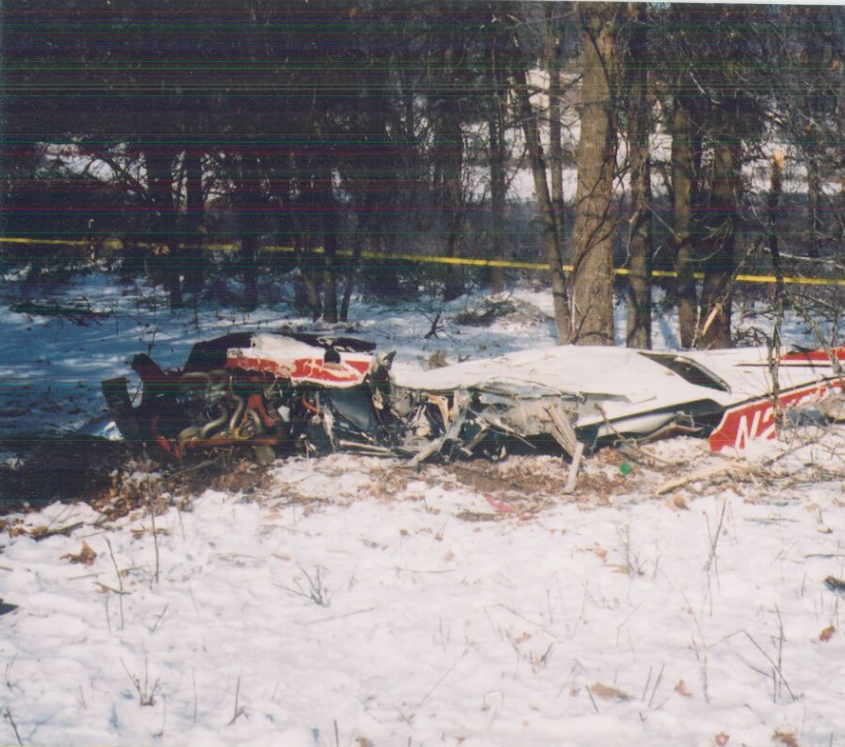
ASN Wikibase Occurrence # 296363
This information is added by users of ASN. Neither ASN nor the Flight Safety Foundation are responsible for the completeness or correctness of this information.
If you feel this information is incomplete or incorrect, you can submit corrected information.
| Date: | Wednesday 4 December 2002 |
| Time: | 17:47 LT |
| Type: |  Cessna 210L Centurion |
| Owner/operator: | Flight Express Inc |
| Registration: | N210CT |
| MSN: | 21060356 |
| Year of manufacture: | 1974 |
| Total airframe hrs: | 6245 hours |
| Engine model: | Continental IO-550-P |
| Fatalities: | Fatalities: 1 / Occupants: 1 |
| Aircraft damage: | Destroyed |
| Category: | Accident |
| Location: | Harrison, AR -
 United States of America United States of America
|
| Phase: | Initial climb |
| Nature: | Cargo |
| Departure airport: | Harrison-Boone County Airport, AR (HRO/KHRO) |
| Springfield-Branson National Airport, MO (SGF/KSGF) | |
| Investigating agency: | NTSB |
| Confidence Rating: |
On December 4, 2002, at 1747 central standard time, a single-engine Cessna 210L airplane, N210CT, operating as Flight Express 714 (FLX 714), was destroyed following an in-flight breakup during initial climb after takeoff from runway 36 at Boone County Airport (HRO), near Harrison, Arkansas. The instrument-rated commercial pilot, who was the sole occupant of the airplane, was fatally injured. The airplane was owned and operated by Flight Express, Inc., of Orlando, Florida. An instrument flight rules (IFR) flight plan was filed and dark night instrument meteorological conditions prevailed the Title 14 Code of Federal Regulations Part 135 cargo flight. The 60-nautical mile flight's intended destination was the Springfield-Branson Regional Airport (SGF), near Springfield, Missouri.
The single-engine airplane was destroyed following an in-flight breakup during initial climb after takeoff into instrument meteorological conditions. A civil flight following employee observed the airplane depart the airport to the north and a few minutes later the airplane was observed making a right turn back toward the airport. The instrument-rated commercial pilot had 3,456 hours of total flight time, with 1,700 hours in the accident aircraft model. The pilot was very familiar with the route of flight, as this was his daily scheduled flight. The weather at the time of departure was reported as winds from 350 degrees at 4 knots, visibility 2.5 statute miles in light snow and mist, few clouds at 800 feet, broken ceiling at 1,800 feet, and overcast skies at 2,700 feet. There was no convective system reported within 200-mile radius of the airport. The VOR servicing the airport was out of service at the time of the accident; however, the pilot was aware and had received a clearance direct to his destination airport. The airplane was properly equipped for flight into known icing conditions. Additionally, the airplane was equipped with a backup vacuum system as well as a standby alternator system. Witnesses reported that the engine "sounded great" until the pitch of the engine appeared to overspeed followed by two "long scraping sounds." The airplane wreckage came to rest 2.5 miles northeast of the departure airport. The wreckage was found fragmented along the ground for approximately 2,534 feet on a northerly heading. The wing flaps were found in the up position and the landing gear was found in the retracted position. The sequence of the in-flight failure could not be determined. The fractures on both wings exhibited overload signatures. The attitude indicator and directional gyro were examined. Both gyros showed indication of rotation at the time of the impact. All separations of the airframe and flight control system appeared characteristic of overload.
Probable Cause: The pilot's failure to maintain control of the aircraft and the exceedance of the manufactured limits, which resulted in an in flight break-up. Contributing factors were the dark night conditions and the clouds.
Accident investigation:
 |
|
Sources:
NTSB FTW03FA057
Location
Images:

Revision history:
| Date/time | Contributor | Updates |
|---|---|---|
| 13-Oct-2022 19:40 | ASN Update Bot | Added |
| 14-Aug-2023 11:21 | Captain Adam | Updated |
Corrections or additions? ... Edit this accident description
The Aviation Safety Network is an exclusive service provided by:


 ©2024 Flight Safety Foundation
©2024 Flight Safety Foundation